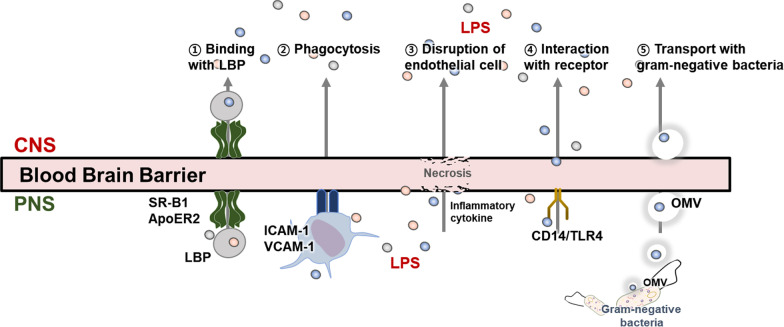Fig. 3.
Mechanisms of lipopolysaccharide (LPS) penetration to the central nervous system. LPS produced in the peripheral system penetrates the BBB and enters the brain. ① LBP is a soluble acute-phase protein that binds to bacterial LPS to elicit immune responses. LBP facilitates LPS penetration of the BBB through various receptors, such as Scavenger reception class B type 1 (SR-B1) and apolipoprotein E receptor 2 (ApoER2). ② LPS is transported to BBB by peripheral immune cells. ③ LPS enters the brain via damaged BBB caused by high concentrations of LPS and LPS-induced pro-inflammatory cytokines. ④ LPS is directly recognized by the cell surface pattern recognition receptor CD14/TLR 14 complex, resulting in penetration to the BBB. ⑤ LPS is transported into the brain through gram-negative bacteria transporters, such as OMV. CD14: Cluster of differentiation 14; CNS: Central nervous system; LBP: Lipopolysaccharide-binding protein; OMV: Outer membrane vesicle; PNS: Peripheral nervous system; TLR4: Toll-like receptor 4; VCAM1: Vascular cell adhesion molecules-1

